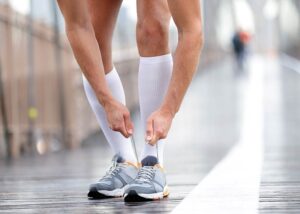Exercise has so many benefits that support our health. Thirty minutes of movement a day combined with a nutritious diet can help lower the risk of developing cardiovascular disease or type 2 diabetes. Exercise can also improve mood and support a positive mental health.
If you are just starting your exercise journey, or returning after taking a break, it is important to allow your body a grace period. Not all of us can run far distances, hold downward dog, or lift heavy weights above our heads the first time back and that is okay.
Mobility is your ability to move purposefully as you go through your day. It is the foundation for living a healthy and independent life. Mobility comprises all the skills required for everyday living: physical stamina, strength, balance, coordination, and range of motion.
Mobility plays a crucial role in enhancing both strength and endurance training in several ways:
- Improved Range of Motion (ROM): Better mobility allows for a broader range of motion during exercise. This can help your muscles move through a greater range, increasing the potential for a greater strength gain. E.g. good mobility in ankles and hips, allows for a deeper squat which engages more muscle fibers.
- Reduced Risk of Injury: Enhanced mobility helps to maintain proper form and technique during workouts reducing the risk of injury. Proper mobility ensures that our muscles, tendons and joints are all working together, moving correctly and efficiently. This is most important for heavy lifts or complex movements.
- Recovery and Flexibility: Incorporating mobility exercises as part of a workout routine aids in post-exercise recovery. Stretching and mobility work can alleviate muscle tightness and soreness, enhancing flexibility and aiding in quicker recovery between workouts.
- Enhanced Performance: Better mobility can directly impact performance in strength and endurance exercises. For instance, in activities like weightlifting or running, improved joint mobility can lead to more efficient movement patterns, allowing for increased power output or endurance capacity.
Integrating mobility exercises into a training regimen can involve dynamic stretches, foam rolling, yoga, or specific mobility drills that target areas prone to tightness or limited range of motion. Prioritizing mobility not only complements strength and endurance training but also contributes to overall fitness by fostering better movement patterns and reducing the likelihood of injury.
Book a session today to find out how mobility can help you move toward your exercise goals. Individual sessions can be booked through our kinesiologists or you can sign up for mobility classes through the Move Well Cafe.




